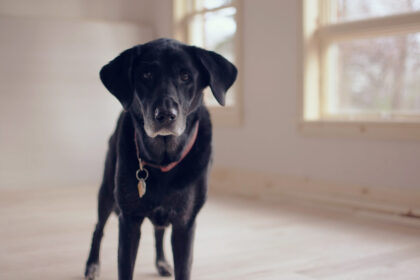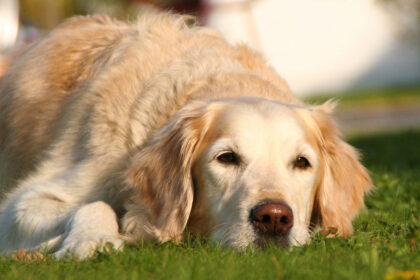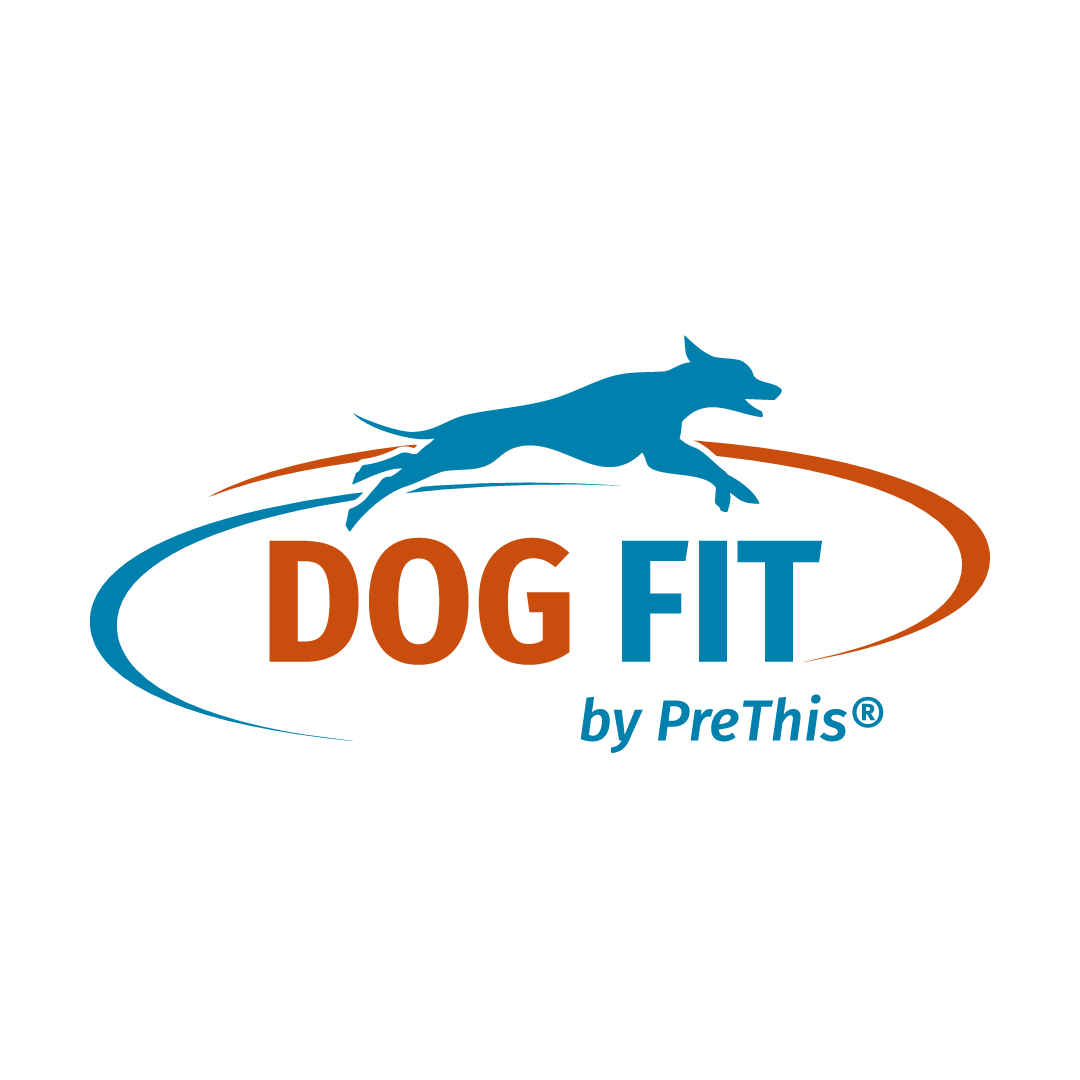 Paralysis in dogs can occur in the hind legs or forelegs and often indicates a neurological disease of the nerve pathways, spine, muscles, or joints. Causes can be external influences such as accidents, but diseases such as spondylosis (pathological changes in the vertebral bodies), herniated discs, or hip dysplasia (maldevelopment of the hip joint) can also cause paralysis in dogs. In most cases, the nervous system has suffered damage.
Paralysis in dogs can occur in the hind legs or forelegs and often indicates a neurological disease of the nerve pathways, spine, muscles, or joints. Causes can be external influences such as accidents, but diseases such as spondylosis (pathological changes in the vertebral bodies), herniated discs, or hip dysplasia (maldevelopment of the hip joint) can also cause paralysis in dogs. In most cases, the nervous system has suffered damage.
Paralysis in dogs can develop slowly and go unnoticed in the early stages. However, it is important to see a veterinarian immediately if your dog becomes paralyzed. However, dog owners can also take preventative measures to strengthen their dog’s nervous system and joints, both as part of therapy and as a preventative measure before paralysis even occurs.
Paralysis in dogs due to an accident
In the event of an accident, nerve compression due to swelling or injury to the dog’s nerves or spinal cord can quickly occur. This can prevent optimal nerve function, leading to paralysis. The dog is then no longer able to move its limbs normally. In such cases, surgery may be necessary to treat the dog.
If paralysis has occurred due to swelling and the associated slight compression of the nerves, administering food supplements such as the vitamin B supplement offered by DOG FIT can help support nerve regeneration and provide relief to the dog.
Another possible cause of paralysis is a herniated disc, in which fluid leaking from the ruptured disc presses on nerves in the spinal canal. This compresses the spinal nerves and can lead to paralysis.
Degenerative diseases associated with paralysis
 If an accident or a herniated disc can be ruled out as the cause of paralysis, the symptoms can also be caused by degenerative diseases in the dog, such as Hip dysplasia. Such diseases often occur in dog breeds that are more susceptible due to overbreeding. For example, short-legged breeds with long backs are particularly frequently affected by spinal disorders such as spondylosis, which can cause severe paralysis in advanced stages. Dog owners should observe their dog closely and take changes in gait or movement seriously.
If an accident or a herniated disc can be ruled out as the cause of paralysis, the symptoms can also be caused by degenerative diseases in the dog, such as Hip dysplasia. Such diseases often occur in dog breeds that are more susceptible due to overbreeding. For example, short-legged breeds with long backs are particularly frequently affected by spinal disorders such as spondylosis, which can cause severe paralysis in advanced stages. Dog owners should observe their dog closely and take changes in gait or movement seriously.
Incontinence in dogs, which is often associated with spondylosis, can also be a warning sign of impaired nerve function. Therefore, it is important to carefully observe the dog’s behavior and handle it sensitively.
What can dog owners do in the event of paralysis?
In addition to veterinary treatment, dog owners can also do things themselves to strengthen their dog’s nervous system and joints and support recovery. This includes a balanced diet with high-quality food that contains all the necessary nutrients, vitamins, and minerals. Nutritional supplements with omega-3 fatty acids or joint supplements can also provide support.
Regular exercise and targeted training are also important for strengthening the dog’s muscles and skeleton. However, care should be taken to ensure that the training is tailored to the dog’s individual needs and that it does not cause excessive strain. Physiotherapy and massage can also help improve circulation and nerve function and promote the dog’s mobility.
Overall, it is important that dog owners are attentive and notice changes inTake your dog’s behavior, gait, or excretion seriously. A regular checkup with your veterinarian can help identify and treat potential problems early and before paralysis occurs.
Joint Function Problems
 Dog owners should be particularly vigilant when it comes to degenerative joint problems, in which injured nerves can also play a role. Joint problems usually occur in older dogs. The most common cause, as already mentioned, is joint wear and tear, which is caused by the wear and tear of the cushioning cartilage and a decrease in synovial fluid (synthetic fluid). Joint wear and tear is also promoted by constant and excessive strain, inadequate nutrition (e.g., one-sided discount food, dry food, etc.), overbreeding, and, unfortunately, the inevitable aging process. To support normal joint function, measures can be taken early on, and there are options even in acute cases.
Dog owners should be particularly vigilant when it comes to degenerative joint problems, in which injured nerves can also play a role. Joint problems usually occur in older dogs. The most common cause, as already mentioned, is joint wear and tear, which is caused by the wear and tear of the cushioning cartilage and a decrease in synovial fluid (synthetic fluid). Joint wear and tear is also promoted by constant and excessive strain, inadequate nutrition (e.g., one-sided discount food, dry food, etc.), overbreeding, and, unfortunately, the inevitable aging process. To support normal joint function, measures can be taken early on, and there are options even in acute cases.
What can you do for your dog?
Dogs love exercise, that’s beyond question, and many canine sports cater to their need for exercise. However, just like with human athletes, their joints are often subjected to considerable strain. Soccer players, for example, often have to retire in their mid-30s because the risk of serious injury increases.
However, there are other causes of joint problems in dogs, such as obesity, which often occurs in conjunction with insufficient exercise and an unbalanced diet. As with humans, the same applies to dogs: if you don’t use it, you lose it, and what you eat determines who you are. However, it’s important to always find the right balance. Too much, too little, or too one-sided – all three things are not good for the dog.
Additional information:
- This article is for informational purposes only and does not replace professional advice from a veterinarian. Supplementary feed does not replace a balanced diet. If you have any questions or concerns, you should always consult a veterinarian.

Our daily inspiration comes from the special moments we spend with our dogs. We share this passion here and invite you to become part of the DOG FIT community on our social media channels.
The content of our articles is for general information purposes only and does not replace diagnosis or treatment by a veterinarian.


Leave a Reply